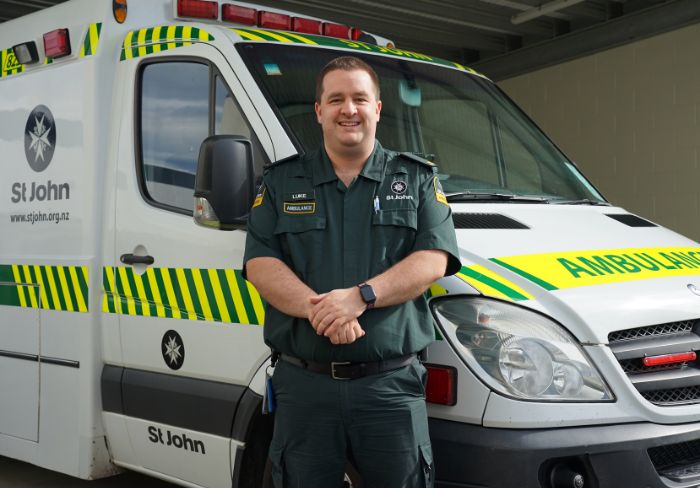There’s no certainty in the work that Ashburton’s Luke Pearson does.
“The callout we responded to this morning was maybe 45 minutes, but the crew overnight had one that took them to Christchurch.”
It’s been four months since Pearson became a Hato Hone St John first responder, and he’s seen a lot in that time – mostly non-life threatening.
“Most people think ‘ambulance’, and then car crashes and heart attacks and stuff.
“But more frequently it’s, ‘I have an unexplained pain’ or ‘I’m scared, and I’m not sure what’s happening’.”
He’s been in the role for four months after a half-year training period, sitting ready at the Ashburton Station.
“The people on station here are amazing.
“I’m someone with very little [initial] medical experience, I’m coming along, asking the stupid questions, arguably making their job harder.
“But I’ve never felt they don’t care, they’ve always been amazingly welcoming and supporting.”
Pearson’s day job is remote cybersecurity work – he’s “an IT guy, so I’m not fit, or playing sport, anything like that.”
His job left him wanting, looking for a purpose, and he considered studying medicine.
“My wife said, ‘why don’t you volunteer for St John as a precursor?’”
Months of medical training, response drilling, and homework had to be completed before he could jump in the drivers seats of Ashburton Stations’ two ambulances.
It’s been a fulfilling job thus far, he said.
“There’ve been a lot of differences in my life, both professionally and personally.
It’s taught him clear communication, to listen, and given him the confidence to help others, even when out of the uniform.
“After I finished my training, my wife and I were up in Christchurch.
“Someone came into the Taco Bell and said, ‘help, I think the lady in our shop is having a heart attack’.”
It turned out to be a pulled muscle from pilates, but Pearson said that incident captured the importance of his role.
“With first responders, a lot of the job isn’t necessarily medical; it’s holding the person’s hand, speaking to them reassuringly.
“Even if for whatever reason, I couldn’t volunteer tomorrow, those skills aren’t going away anytime soon.”
For those who want to help, but don’t fancy the high-risk environment, there are other roles, like the ‘Caring Caller’ programme.
“You’ve got people who are home alone, and lonely, so you schedule in to give them a call.
“You don’t need a level of fitness for that.”
There are also often openings for St John charity shop workers, and health shuttle drivers.
“Anybody who wanted to do it could do it.”
By Anisha Satya





